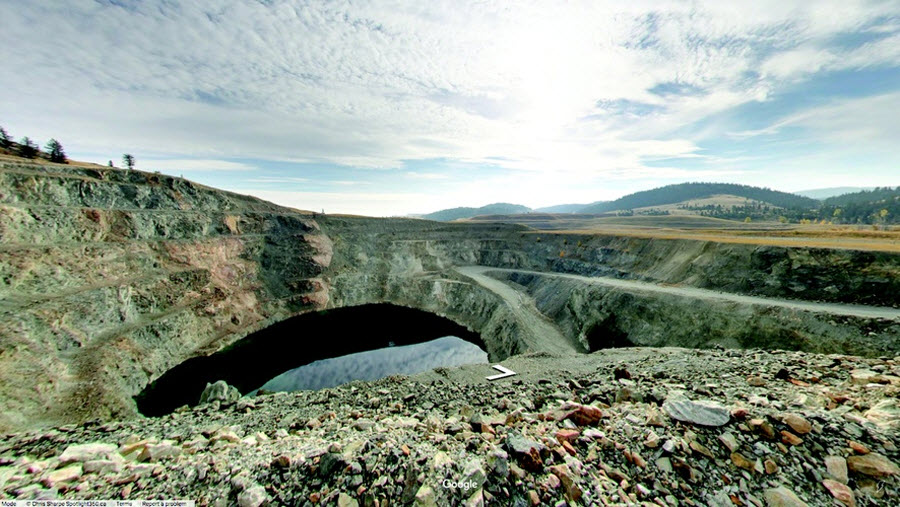BC government rejects Ajax mine

The B.C. government has rejected the $1.5 billion Ajax copper-gold mine in Kamloops, by declining to issue an environmental certificate.
The project was the subject of a joint environmental review. The federal government has yet to issue its own decision on the application for an environmental certificate. Regardless of the federal ruling, however, the mine cannot be built, said George Heyman, B.C. Minister Environment and Climate Change Strategy.
“No matter what the decision by the federal government is, this project would require a provincial certificate to go ahead, and the decision today is to not grant it,” he said at a press conference December 14.
In rejecting the mine’s application for an environmental certificate, the BC Environmental Assessment Office stated that the “adverse effects of the Ajax project outweighed the potential benefits.”
Other reasons given for rejecting the proposal were “significant adverse effects to Indigenous heritage and to the current use of lands and resources for traditional purposes.”
The Stk’emlupsemc Te Secwepemc Nation (SSN) claim the territory and have explicitly rejected the mine project. The SSN are among four First Nations groups who have asserted claims over the area where the mine would be built. Through the environmental review process, the B.C. government determined the SSN has a particularly strong potential rights and title claim.
The decision will likely be studied by resource companies wanting to invest in B.C., because it is the first decision on a major resource project by the new NDP government, which has formally adopted the United Nations Declaration on the Rights of Indigenous People (UNDRIP).
That declaration has been interpreted by some to give a veto to First Nations in B.C., since one clause in UNDRIP states that all development must have the “free, prior and informed consent” of indigenous people in the area.
Heyman said the decision to reject an environmental certificate for Ajax did not flow from his govenrment’s adoption of UNDRIP.
“I would not say that this decision paves the way for vetoes or even that, were this decision made solely on the basis of UN Declaration on the Rights of Indigenous People, which it wasn’t, that it would constitute a veto,” Heyman said.
“I would say aspects of this decision were consistent with UNDRIP, but this decision process was underway long before we formed government. This does not constitute an implicit veto on future projects, nor does it presume – when we say that we accept the UN Declaration on the Rights of Indigenous People in the future – that that necessarily constitutes a veto. First Nations themselves have said that it doesn’t.”
But that’s not how the chief of the SSN interprets the decision.
“The British Columbian government, in choosing to refuse KGHM Ajax’s environmental assessment, are enacting their commitment to uphold the United Nations Declaration on Indigenous Rights and to implement the 94 calls to action from the Truth and Reconciliation Commission,” said SSN Chief Fred Seymour in a news release.
The property is owned by KGHM International Ltd., a Polish company, with B.C.’s Abacus Mining & Exploration Corp. (TSX-V:AME) owning a 20% share in the project.
The mine project would have created 1,800 short-term jobs over a two-and-a-half-year construction period and 500 permanent jobs once the mine is in operation, generating an annual payroll of $60 million.
KGHM also offered a benefits agreement in which the City of Kamloops and a number of non-profit organizations would receive $100 million over 25 years. Kamloops city council rejected the offer in July, with council voting 5-1 against the mine being built.
Initially, the City of Kamloops biggest concern was the potential hazards of a tailings pond. The city’s own consultant addressed those concerns somewhat, leaving dust from the mine’s operations as the biggest concern for Kamloops residents.
The mine would be located just two kilometres from a residential area. An EAO report cited air quality concerns as one of the determining factors for rejection the project.
The government’s decision could be challenged by KGHM, which could ask for a judicial review. A spokesperson for KGHM could not be reached for comment.
{{ commodity.name }}
{{ post.title }}
{{ post.date }}

2 Comments
Rob Sinclaire
SIX YEARS of ‘EPA” and the answer is “No” to yet another JOB & WEALTH creating enterprise
apple
All mineral exploration and development companies operating in BC should review this decision very carefully. Before any serious money is spent on a project get signed contracts with First Nations and other stakeholder that if a mine is found it can be developed otherwise you are risking shareholders cash. There are better and safer places to risk limited funds